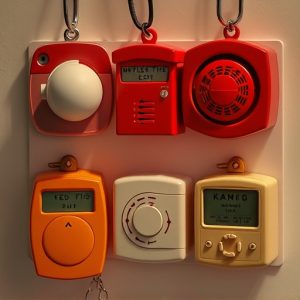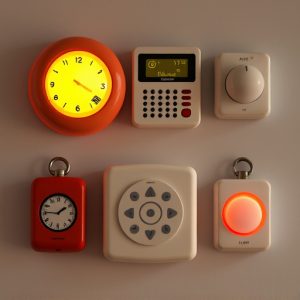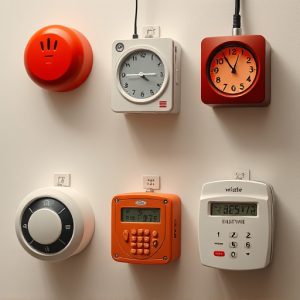Personal Alarm Systems with Remote Monitoring: Enhanced Safety, Peace of Mind
Personal protection devices with remote monitoring offer enhanced safety through powerful Personal A…….
Personal protection devices with remote monitoring offer enhanced safety through powerful Personal Alarm Sound systems and customizable Coverage Area. These devices vary from GPS-enabled local alerts to global satellite networks, ensuring help is accessible anywhere. By selecting a coverage area aligned with personal needs, users can receive immediate assistance during emergencies, even in remote locations, providing peace of mind for solo dwellers or those with specific security requirements.
Personal protection devices with remote monitoring are transforming how we ensure safety. This comprehensive guide explores the evolving landscape of personal alarm systems, focusing on their crucial role in enhancing individual security. We delve into the key components that constitute an effective system and factors to consider when choosing the optimal coverage area. From real-world applications to the benefits of remote monitoring, this article provides insights for anyone seeking peace of mind through advanced personal protection technology, featuring the essential Personal Alarm Sound as a core element.
- Understanding Personal Protection Devices: A Comprehensive Overview
- The Role of Remote Monitoring in Enhancing Safety
- Key Components of a Personal Alarm System
- Factors to Consider When Choosing Coverage Area
- Real-World Applications and Benefits of Remote Monitoring
Understanding Personal Protection Devices: A Comprehensive Overview
Personal protection devices, often equipped with remote monitoring capabilities, are innovative tools designed to ensure safety and peace of mind. These devices, commonly known as personal alarms or emergency beacons, emit a loud and distinct personal alarm sound to deter potential threats and attract attention when activated. Their primary function is to provide individuals with a means to signal for help swiftly and discreetly.
The coverage area of these personal protection devices varies based on the technology employed. Some use GPS tracking, enabling users to trigger an alert within a specified geographic range. Others rely on cellular networks or satellite communication, allowing for broader reach, especially in remote locations where traditional mobile signals may be unavailable. This versatility ensures that individuals have access to assistance no matter where they find themselves.
The Role of Remote Monitoring in Enhancing Safety
Remote monitoring is a game-changer in the realm of personal protection, offering enhanced safety measures that traditional alarms cannot match. By utilizing technology to track and assess potential dangers, individuals can stay secure even when they’re away from home. This innovative approach allows users to set up a personal alarm system with a defined sound coverage area, ensuring that any intrusions or emergencies are promptly detected and signaled.
With remote monitoring, the user can access real-time alerts and surveillance feeds, giving them complete peace of mind. This feature is especially valuable for those who live alone or have specific security concerns. Whether it’s a sudden loud noise, unauthorized entry, or an emergency situation, the immediate notification enables users to take swift action, increasing their reaction time and potentially deterring potential threats.
Key Components of a Personal Alarm System
A personal alarm system, designed for self-protection, comprises several key components that work in harmony to ensure maximum safety and peace of mind. At its core, a powerful Personal Alarm Sound serves as a deterrent and emergency signal, capable of drawing attention and frightening potential assailants. This high-decibel alarm is typically triggered by a portable device, often worn as a pendant or bracelet, which can be easily activated in case of distress.
The Coverage Area of the personal alarm system is another critical aspect. These devices usually offer a range within which the signal can be received and responded to. This area may vary based on the technology used, with some advanced systems employing GPS tracking for precise location-based activation. The coverage ensures that help can be summoned promptly, whether in urban settings or during outdoor activities.
Factors to Consider When Choosing Coverage Area
When selecting a personal protection device with remote monitoring, understanding and considering the coverage area is paramount. This factor ensures that the device’s range aligns with your intended use case, whether it’s for daily commuting, outdoor adventures, or even home security. Devices typically offer various options, from limited local ranges to extensive global coverage, catering to different needs and locations.
The personal alarm sound coverage area is a crucial aspect, as it determines how far the alarm signal can reach. This range influences your ability to attract attention in case of distress. Some devices may have a localized sound designed for immediate surroundings, while others boast longer-range signals effective for broader areas. Choosing the right coverage area depends on personal preferences and the level of protection sought, ensuring peace of mind during various activities.
Real-World Applications and Benefits of Remote Monitoring
In today’s world, personal protection has evolved beyond traditional self-defense mechanisms. Remote monitoring systems for personal alarm devices offer a modern solution, providing individuals with peace of mind and enhanced safety. These innovative technologies allow users to trigger an alarm from a distance using just their smartphones, ensuring immediate assistance in case of emergencies. For instance, a personal alarm with remote monitoring can be utilized by hikers or outdoor enthusiasts who venture into areas with limited cellular coverage; the alarm can still be activated manually or through specific environmental triggers, and it will connect to satellites or other communication networks once within range, alerting emergency services or designated contacts.
The benefits of this feature are numerous, especially in scenarios where immediate help is required. For example, during a personal crisis or medical emergency, remote monitoring enables swift action. The system can detect specific events like falls or unusual activity patterns and automatically notify emergency responders, ensuring prompt assistance. Moreover, it provides an extra layer of security for individuals living alone, as it allows them to call for help discreetly without physically operating an alarm. This technology is particularly valuable in urban areas with high crime rates, where victims may feel more secure knowing they can secretly alert authorities if needed.
Personal protection devices with remote monitoring offer a revolutionary way to enhance personal safety, especially in unforeseen situations. By integrating these devices with real-time tracking and alarm systems, users can ensure swift assistance during emergencies. When choosing a system, consider factors like the coverage area, battery life, and compatibility with existing emergency services. The key components, including loud personal alarm sounds capable of drawing attention, are vital for effective distress signaling. With remote monitoring, individuals can gain peace of mind, knowing help is on the way should they ever need it.


